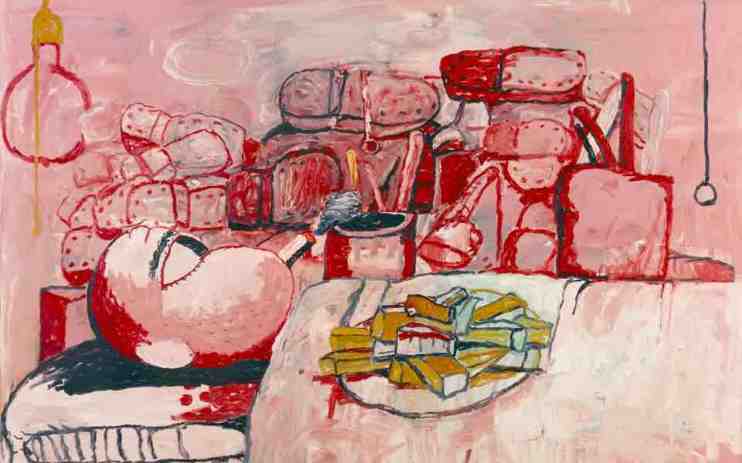Philip Guston at Tate Modern: A savage dissection of the banality of evil

The furore surrounding the delay of this major Philip Guston retrospective precedes it. Originally due to tour in 2020 through London, Boston, Houston and Washington, the death of George Floyd, and the Black Lives Matter movement prompted its curators to balk at showing Guston’s highly controversial images of Ku Klux Klan figures, deeming it too risky given the political climate of the time.
There is no denying that the images are shocking, and the Tate is at pains to provide trigger warnings. The curators also studiously contextualise the work within his wider oeuvre. Born in 1913 in Canada into a Jewish immigrant family, Guston responded to wars, racial violence and socio-political unrest, weighed down by the responsibility of the role of artist in depicting such horrors. From the first room duly entitled ‘Restlessness’, “Legend” (1977) – an example of the mature style for which he is best known: a large-scale, faux-naïve depiction of the artist surrounded by disembodied symbols of violence and unrest – signifies a torment palpable throughout his career.
Earlier experiments in surrealist style, showing clear influences from Picasso’s monumentalism, display a painterly treatment that is more representational and inflected by Guston’s love of Renaissance art, particularly Piero della Francesca. 1937’s “Bombardment” is a response to the Spanish Civil War, and whose tondo shape populated by trompe l’oeil-distorted faces updates these Renaissance tropes. The curators show how Guston moves away from representation, through an accomplished section of abstract expressionism, and how this abstraction evolves into his mature work: two-dimensional, cartoonish imagery painted wet-on-wet, with a savagery equalling its simplicity.
Contrasting with the sophistication of earlier work, the paintings shown in the ‘Hoods’ section uses this savagery to emphasise the banality of everyday evil. Klansmen are simplified into triangular hoods with eye slits, like ridiculous racist Pac-men, smoking cigarettes and driving silly cartoon cars. The seeming normality of these actions highlights that racism is everywhere and all around us, all the time.
Guston said of being an artist: “You are a medium through which this rhythm is passed through; otherwise it is unbearable.” Many will feel profoundly affected by the dual themes in this show: Guston’s response to atrocities committed by humans, and the overwhelming pain of producing these responses.